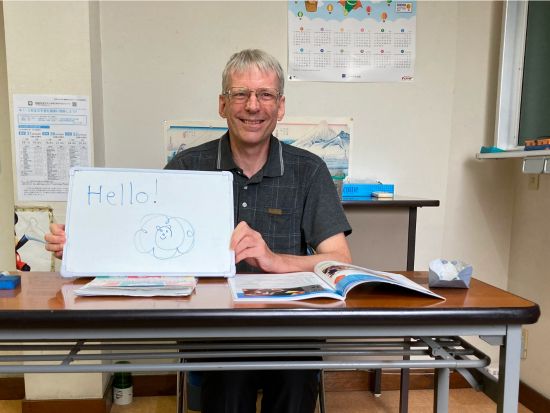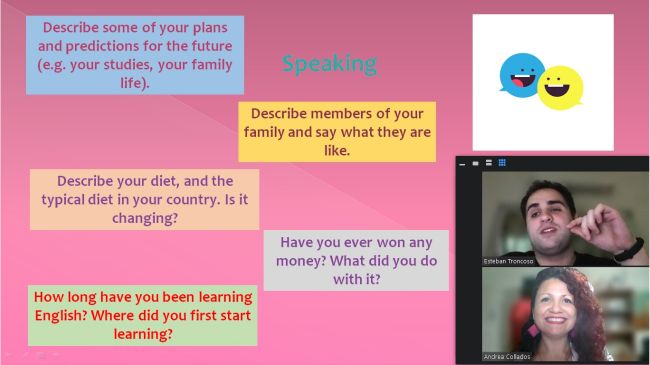With over 1.5 billion native and non-native speakers, English is the world’s most widely spoken language. Teaching English as a global language means acknowledging the reasons for its worldwide presence and helping learners navigate this shared linguistic space. By incorporating diverse accents, dialects, and cultural perspectives, teachers can prepare students to use English effectively in a global context. Here are ten strategies to support that approach in the classroom.
Interested in training to build effective skills in teaching global English? Learn more about Bridge’s Micro-credential course in Teaching English as a Global Language.
- Tip #1: Emphasize the global nature of the English language.
- Tip #2: Examine your attitudes and your students’ attitudes toward English.
- Tip #3: Remind students that English is no longer linked to a particular country.
- Tip #4: Tell students that they might be using English with other non-native speakers.
- Tip #5: Emphasize fluency, or communication, over accuracy.
- Tip #6: Teach students how to navigate misunderstandings.
- Tip #7: Explain that there is no one standard English pronunciation.
- Tip #8: Encourage a multicultural atmosphere in the classroom.
- Tips #9: Integrate authentic materials from around the world.
- Tip #10: Allow students to use English to explore their own local surroundings and interests.
Tip #1: Emphasize the global nature of the English language.
When teaching English as a global language, it is important to provide context to help students understand how exactly English became a global language. Present a brief history lesson that traces English from its origins in England to the dozens of countries that use it as a dominant language today. Discuss why English became widely adopted around the world while other languages were not.
By following the evolution of English through the centuries up to now, students can fully appreciate the flexible, open, and inclusive nature of English that facilitated its global adoption.
New to TEFL? You’ll want to get initial training and qualification with a TEFL certificate. You can explore our online TEFL courses to get started!
Tip #2: Examine your attitudes and your students’ attitudes toward English.
Students and teachers who have been taught to speak and hear English in a certain “correct” way might find it difficult to grasp the characteristics that make English a global language. Take inventory of the vocabulary you use and the music you listen to. Trace these words and sounds to their original cultures to appreciate the true openness of the international English language.
This exercise serves as a reminder that English is constantly evolving into a more descriptive, more powerful language that is expressive of a global human experience. Throughout history, it has rarely conformed to grammatical or lexical boundaries, preferring instead to serve as a channel of candid human expression around the world.
Learn about other effective ESL teaching methods.

Tip #3: Remind students that English is no longer linked to a particular country.
Pull up a map and ask students to start naming the countries where English is spoken as a native language. Then, ask them to find the countries where it is spoken as a dominant language. Finally, ask them to find where it is spoken by the majority of the population.
Not only will this be a very surprising exercise (did you know that English is an official language in Zimbabwe?), but it will also remind students that there are many ways that English is spoken around the world. This can help change one’s perspective from seeing English as having a single, correct form of usage to seeing it as a way to facilitate communication with people across the globe.
Tip #4: Tell students that they might be using English with other non-native speakers.
Students who are learning English as a global language must be reminded that statistically speaking, they are more likely to use English with non-native English speakers than natives. This is because English has more non-native speakers than native speakers! It’s estimated that 70-75 percent of the world’s English speakers are non-native.
Although some students may have very specific goals for where and with whom they will be speaking English, it’s highly likely that they will at some point encounter an unexpected accent or dialect of English.
Business English teachers will often have students who are non-native speakers and who will be engaging with other non-native speakers when applying the English language skills they learn in class. Bridge Corporate Language Learning teachers provide Business English courses to working professionals participating in corporate language programs. At Bridge, English is taught in the context of real-world applications, which often means English is spoken between non-native speakers.
You can incorporate some listening comprehension activities that take into account different accents to support student learning. There are many AI-powered language practice and tutoring apps, as well, that provide students with opportunities to practice conversations in a variety of settings.

Tip #5: Emphasize fluency, or communication, over accuracy.
Academic English and English proficiency exams have ingrained in many students’ minds a stark contrast between “correct” and “incorrect” English. It is the heavy task of the global English teacher to help students unlearn their fear of mistakes and embrace communication for the sake of comprehension.
When speaking, students should learn to decipher their listeners’ body language to ensure they are being understood. Some students will prioritize correct language usage and pause, hesitate, and self-correct to the point of losing their audience’s attention. Other students will disregard all standards of usage and blurt out a string of nonsensical words.
Get students comfortable with the eventual reality that, while speaking English globally, they will at some point be misunderstood. To make themselves understood by people from around the world who all speak varying levels of English in various dialects, teach your students to be receptive to their listeners’ reactions, adapt their speech accordingly, and prioritize intelligibility above all else.
Learn more about teaching fluency vs. accuracy and when to focus on one skill set over another.
Tip #6: Teach students how to navigate misunderstandings.
Building on the idea that communication matters more than grammatical precision, it’s also important to help students develop strategies for what to do when communication breaks down. This means giving them tools like asking for clarification (“Could you repeat that, please?”), rephrasing their own statements, and confirming understanding (“So, you mean…?”).
Role-playing these types of interactions helps students build confidence and prepares them for real-life situations – whether in meetings, travel, or casual conversations. By focusing on communication strategies rather than perfection, you help students become more effective, empathetic speakers.
Teaching students how to gracefully manage confusion or miscommunication also reinforces the idea that English is a functional tool, not a performance. It’s not about sounding “perfect” – it’s about connecting with others across languages and cultures, and being flexible when things don’t go exactly as planned.
Tip #7: Explain that there is no one standard English pronunciation.
Tomato, tomato (tomayto, tomahto).
From American English to Scottish English to South African English, there are countless ways to pronounce each word in this wonderfully global language. Instead of fretting over the correct pronunciation of a word, train students’ ears to a plethora of pronunciations by exposing them to different accents.
It can be difficult for even native English speakers to understand different accents. The more students listen to a variety of pronunciations, the easier it will be for them to understand others and make themselves understood in a global English setting.
Some teachers tend to repeat what students say, absorbing what they hear and automatically translating it into their own accents. If you and the class can understand what the student is saying, try to refrain from over-correcting their pronunciation or “translating” their pronunciation. Continued exposure to the language and meaningful conversations using English will iron out any unintelligible sounds without crippling their communication with too many rules.
Check out the dos and don’ts of error correction in the EFL classroom.

Tip #8: Encourage a multicultural atmosphere in the classroom.
Every language classroom should be a vivacious place full of culture, conversation, cuisine, music, poetry, and emotion! After all, language is used to reflect the human experience, not twisted and grappled with to conform to one single experience.
The more culture you can bring into the classroom, the more you can take advantage of the full potential of English as a global language. These activities will also enhance the 21st-century skills of your students as they build cultural and social competencies through engaging exposure to new experiences.
Invite your students to share a piece of their own culture. If your students are all from the same country, you can still invite them to share aspects of their lives that they love – food, hobbies, music, sports, literature, and more. You can also show videos, play music, or invite guest speakers to exemplify how English is used to express a global experience.
Interested in learning more about teaching cultural competency and other modern skills that promote student success beyond the classroom? Learn more about Bridge’s suite of Micro-credential courses in 21st-Century Teaching Skills.
Make transferable skills a part of every ESL lesson with the free
Guide to Teaching 21st-Century Skills in the ESL/EFL Classroom
downloadTips #9: Integrate authentic materials from around the world.
One of the best ways to reinforce the global nature of English is by incorporating authentic materials into your lessons – materials created by English speakers from various countries and cultural backgrounds. This includes podcasts, YouTube videos, blog posts, news articles, or even social media content produced by non-native speakers or international communities.
Using real-world examples allows students to encounter English in a variety of accents, formats, and contexts, far beyond the confines of standardized textbooks. It also helps them develop listening and reading skills that are more adaptable to the real-life situations they’ll encounter when using English with people from different backgrounds.
Encouraging students to explore these materials builds both linguistic awareness and cultural sensitivity. It reminds them that English doesn’t belong to one country or one group of people – it is a shared language used by billions, and it’s shaped by the voices of its global community.
Want more ideas for bringing authentic, global content into your lessons? Download our free eBook on using dynamic resources in Business English classes.
Tip #10: Allow students to use English to explore their own local surroundings and interests.
Although it’s a global language, English is also uniquely personal. Its openness and inclusivity have allowed it to be adopted as a global language. Its flexibility has allowed it to be molded around each individual’s unique human experience.
While showing students how English is used in Scotland or Zimbabwe, don’t forget that, ultimately, they are there to use it as an expression of their own personal existence.
Invite them to take English out of the classroom and explore how it is used in their city. Whether it’s the cafe playing the latest hit song from a music artist, the name of the milkshake at their local fast food restaurant, or a new Instagram update from a celebrity, remind students to recognize the role English already plays in their lives.
Instead of glazing over it, invite them to interact with it by straining to understand the song lyrics, ordering that milkshake in English, or setting their phones to English. Since it’s all around us, it can be easy to learn to ignore global English. Invite students to recognize it, embrace it, and engage with it in their own daily lives.
Teaching English as a global language requires that teachers approach it with the same spirit of openness, flexibility, and inclusivity that facilitated its global adoption in the first place. By following these tips, you can help your students use this language to its full potential – to facilitate multicultural communication and collaboration and to express the full, authentic experience of humans around the globe.














